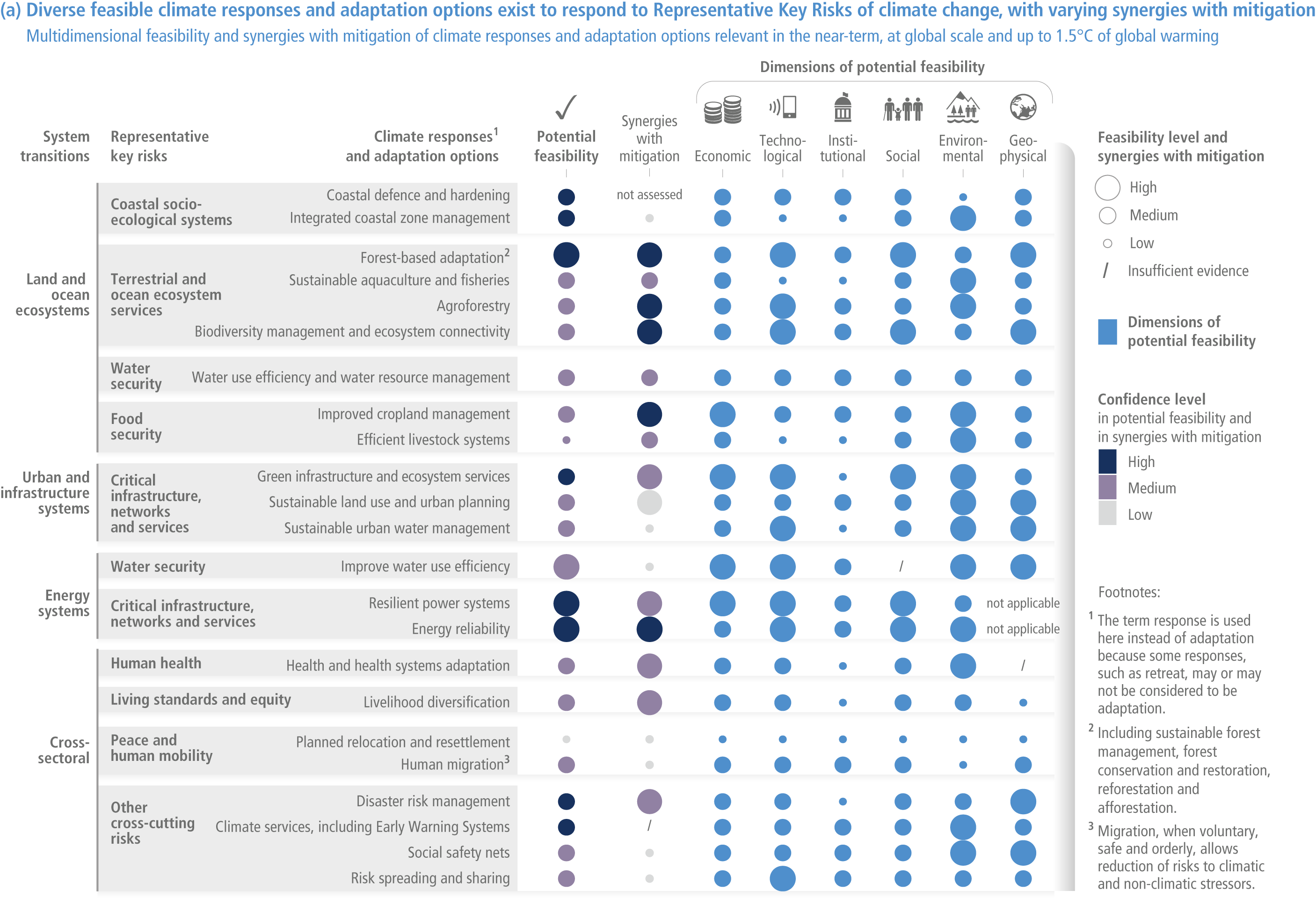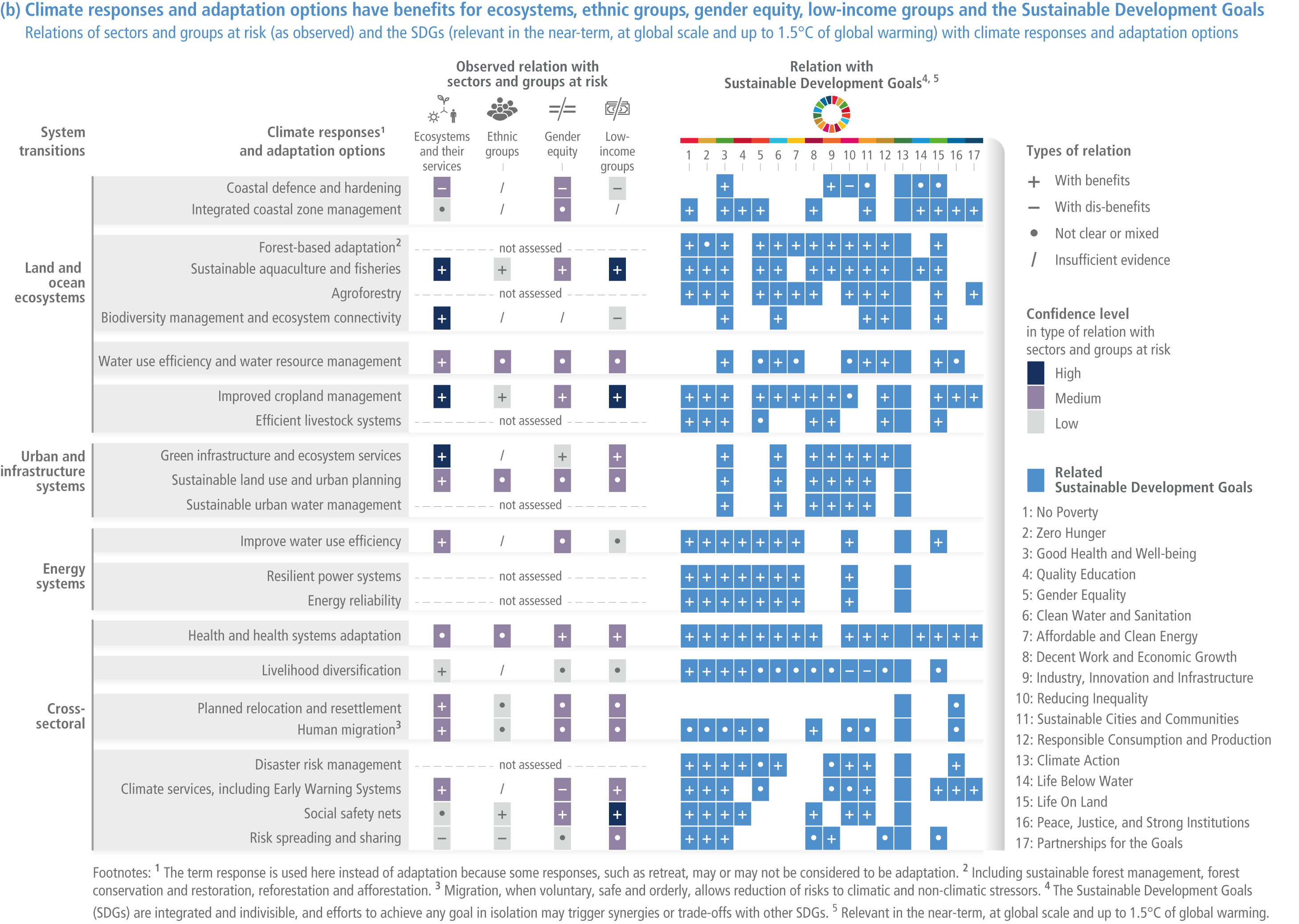Figure TS.11
Figure caption
Figure TS.11 | (a) Climate responses and adaptation options, organized by System Transitions and Representative Key Risks (RKRs), are assessed for their multidimensional feasibility at global scale, in the near term and up to 1.5°C global warming. As literature above 1.5°C is limited, feasibility at higher levels of warming may change, which is currently not possible to assess robustly. Climate responses and adaptation options at global scale are drawn from a set of options assessed in AR6 that have robust evidence across the feasibility dimensions. This figure shows the six feasibility dimensions (economic, technological, institutional, social, environmental and geophysical) that are used to calculate the potential feasibility of climate responses and adaptation options, along with their synergies with mitigation. For potential feasibility and feasibility dimensions, the figure shows high, medium, or low feasibility. Synergies with mitigation are identified as high, medium, and low. Insufficient evidence is denoted by a dash. {CCB FEASIB, Table SMCCB FEASIB.1.1, SR1.5 4.SM.4.3} (b) Climate responses and adaptation options, organized by System Transitions and Representative Key Risks, are assessed at global scale for their likely ability to reduce risks for ecosystems and social groups at risk, as well as their relation with the 17 Sustainable Development Goals (SDGs). Climate responses and adaptation options are assessed for observed benefits (+) to ecosystems and their services, ethnic groups, gender equity, and low-income groups, or observed dis-benefits (-) for these systems and groups. Where there is highly diverging evidence of benefits/ dis-benefits across the scientific literature, e.g., based on differences between regions, it is shown as not clear or mixed (•). Insufficient evidence is shown by a dash. The relation with the SDGs is assessed as having benefits (+), dis-benefits (-) or not clear or mixed (•) based on the impacts of the climate response and adaptation option on each SDG. Areas not coloured indicate there is no evidence of a relation or no interaction with the respective SDG. The climate responses and adaptation options are drawn from two assessments. For comparability of climate responses and adaptation options see Table SM17.5. {17.2, 17.5, CCB FEASIB}

